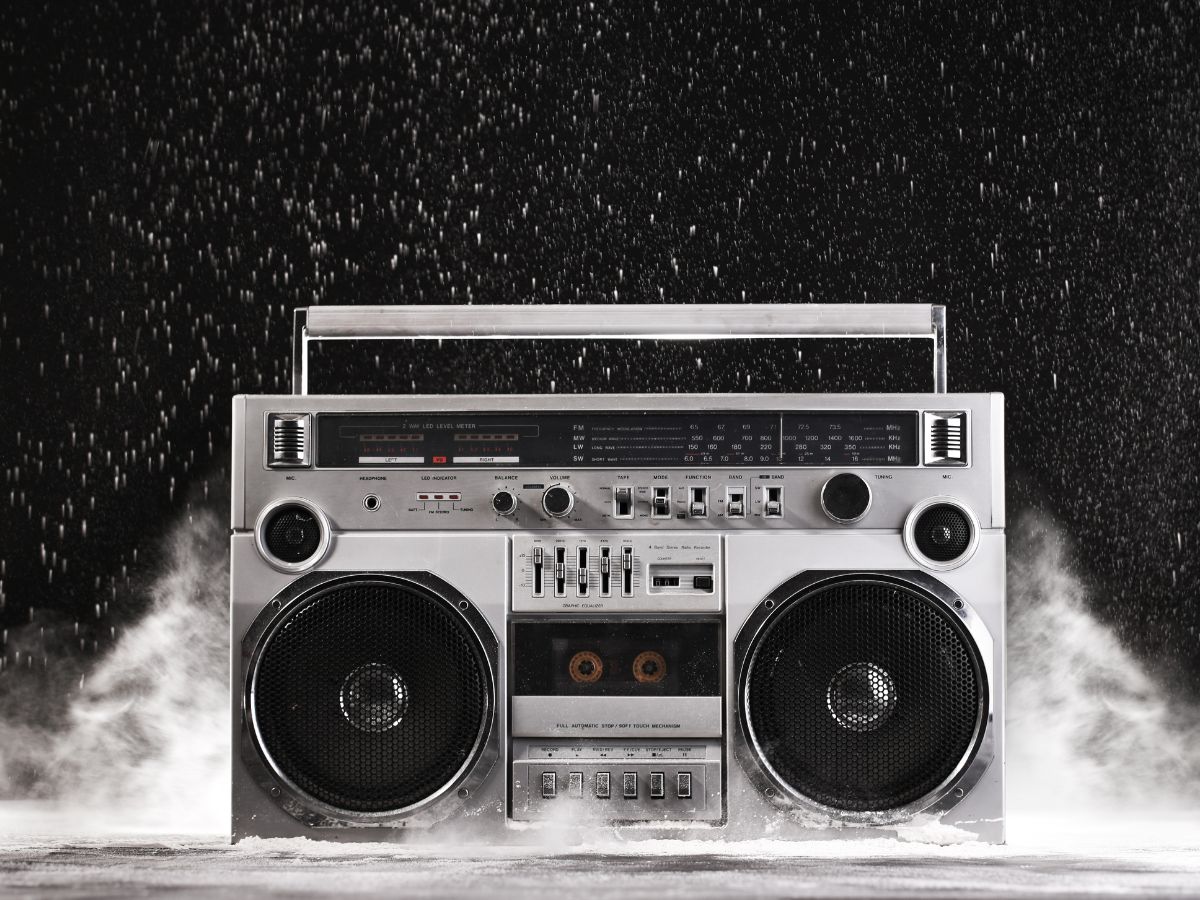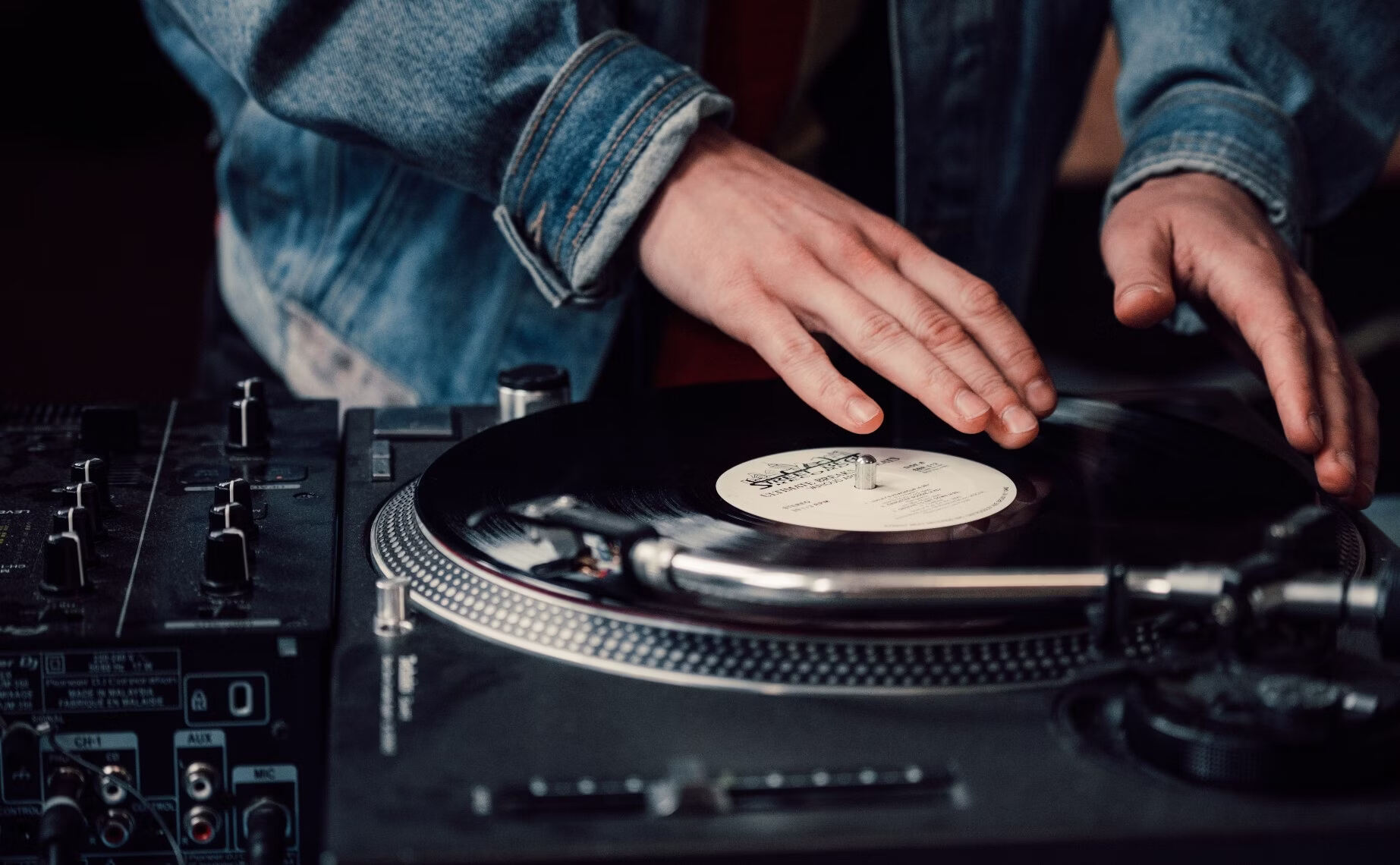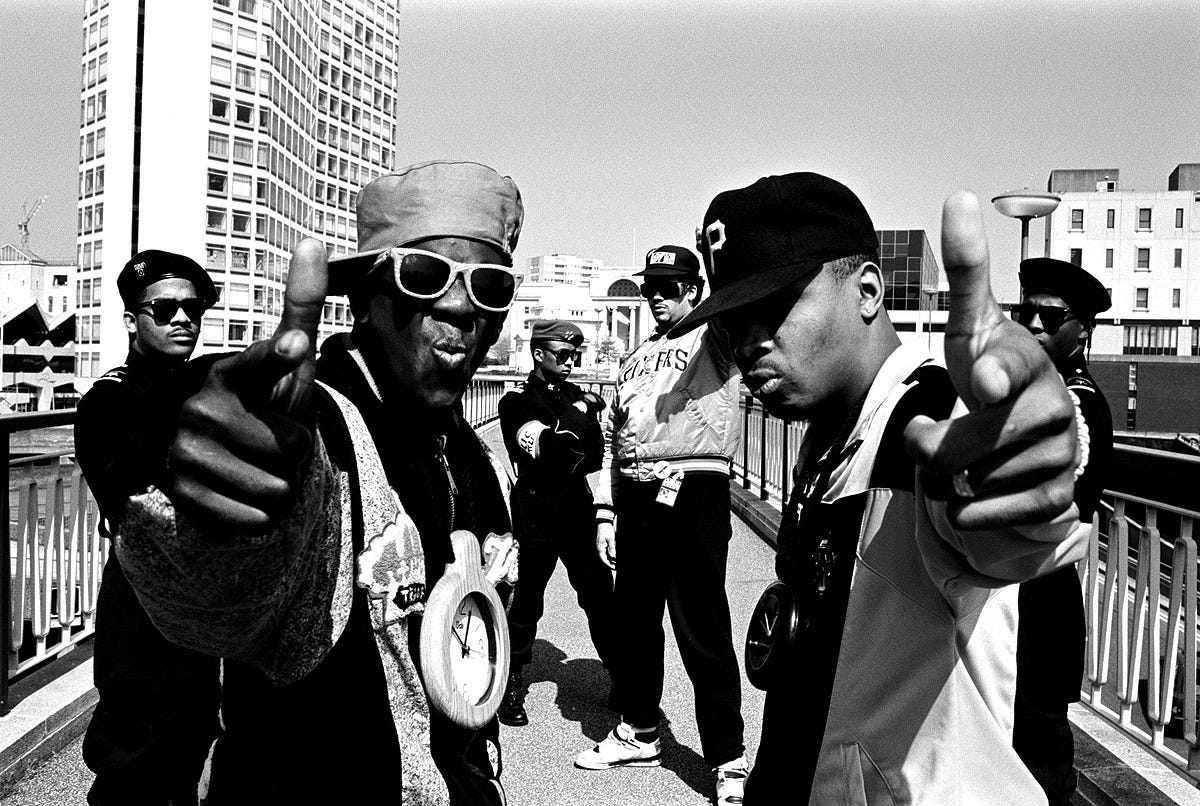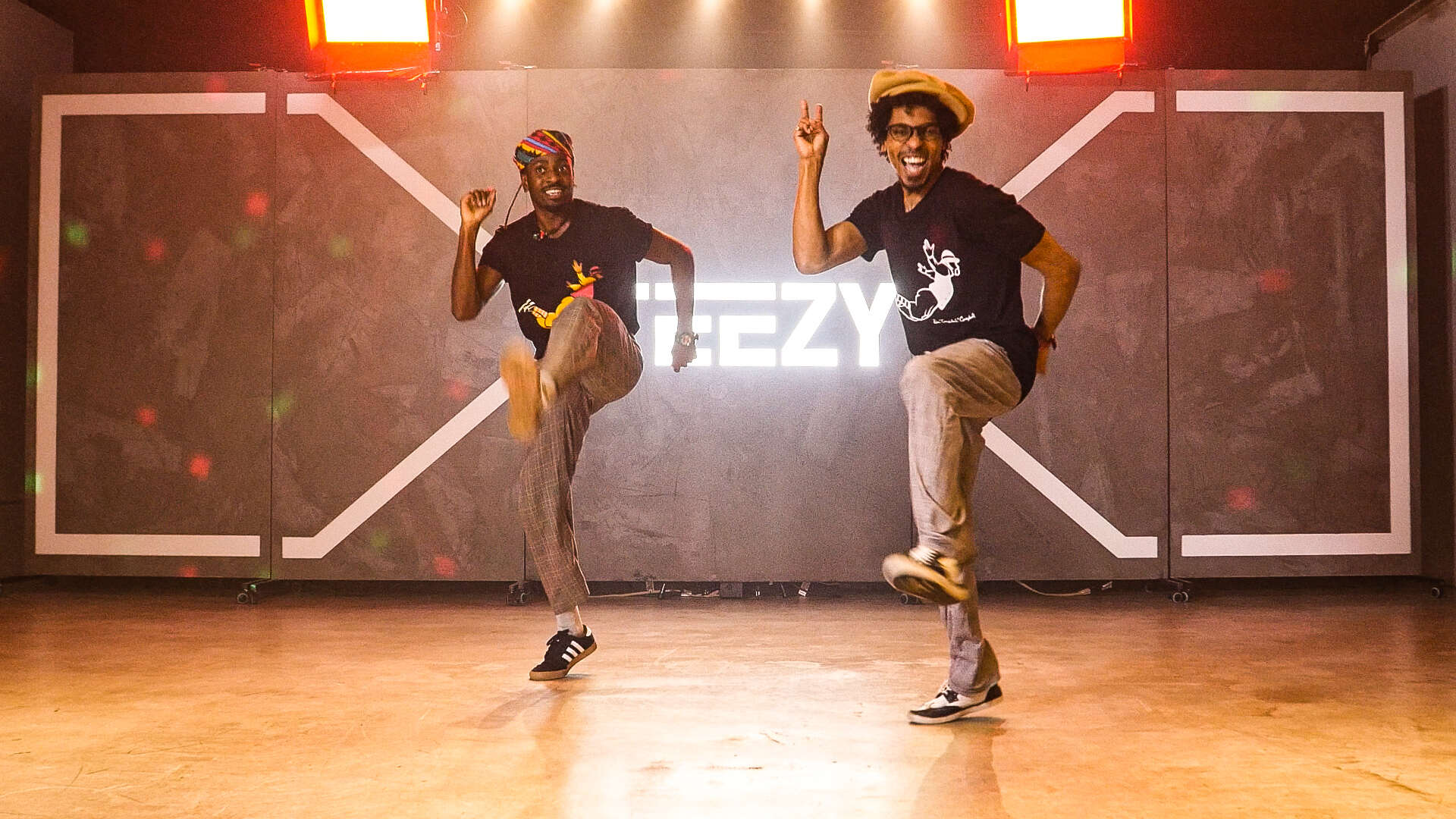

Hip Hop
What Is Boom Bap, Hip Hop
Modified: January 22, 2024
Discover the essence of Hip Hop with Boom Bap - the authentic, rhythmic sound that fuels the urban culture. Explore the roots, beats, and lyrics that define this iconic genre.
(Many of the links in this article redirect to a specific reviewed product. Your purchase of these products through affiliate links helps to generate commission for AudioLover.com, at no extra cost. Learn more)
Table of Contents
Introduction
Hip hop is a diverse and dynamic genre that has undergone numerous transformations since its inception in the 1970s. One of the distinct sub-genres within hip hop is boom bap, which has left an indelible mark on the history and evolution of the genre. Known for its gritty and raw sound, boom bap has become synonymous with the essence of traditional hip hop.
The term “boom bap” refers to the drum pattern that is prevalent in many boom bap tracks. It is characterized by hard-hitting kicks and snares that create a distinctive rhythm, providing a solid foundation for the accompanying lyrics and samples.
Originating in the 1980s and 1990s, boom bap emerged during a time when artists were looking to create a unique and authentic sound that represented the realities of urban life. It became the signature style for many iconic hip hop acts, including the likes of Nas, Wu-Tang Clan, and A Tribe Called Quest.
Boom bap is characterized by its distinct elements, such as intricate lyricism, sample-heavy production, and a focus on storytelling. The lyrics often delve into social and political issues, sharing personal experiences, and showcasing the artist’s skill and creativity.
One of the key elements that sets boom bap apart is its emphasis on sampling. Producers would dig through crates of vinyl records, extracting soul, funk, and jazz samples to create the melodic backdrop for their tracks. This sampling culture gave boom bap a nostalgic and timeless quality, as artists paid homage to the musical forefathers who paved the way.
Boom bap’s influence in hip hop cannot be overstated. It played a pivotal role in shaping the sound of the genre and influenced subsequent generations of artists. Its impact can be seen in the rise of East Coast hip hop during the 1990s, with boom bap serving as the foundation for the iconic “Golden Age” of hip hop.
As time went on, hip hop evolved and explored different musical styles and sub-genres. Boom bap, although less prominent in the mainstream, continued to resonate with dedicated fans and underground artists who sought to preserve the purity and authenticity of hip hop’s early days.
Today, there is a renewed interest in boom bap, with a resurgence of artists embracing the style and bringing it back to the forefront. This modern boom bap revival showcases the timelessness of the genre and its enduring appeal.
In this article, we will delve deeper into the origins, characteristics, influence, and notable artists of boom bap. We will explore what makes this sub-genre so enduring and how it continues to shape the hip hop landscape. Prepare to journey into the heart of boom bap and discover the essence of true hip hop.
Origins of Boom Bap
Boom bap originated in the 1980s and 1990s during the golden age of hip hop. It was born out of the vibrant and diverse music scene in New York City, particularly in the boroughs of the Bronx and Brooklyn.
The term “boom bap” is derived from the sounds of the drums used in these early hip hop tracks. With its heavy emphasis on the kick drum (boom) and the snare drum (bap), the boom bap drum pattern quickly became a defining characteristic of the genre.
During this era, boom bap became the foundation of East Coast hip hop. Artists and producers like DJ Premier, Pete Rock, and RZA pioneered the use of these hard-hitting drum patterns in their production, providing a distinctive sound that set them apart from other regions.
One of the key factors contributing to the development of boom bap was the rise of sampling in hip hop production. Producers started to dig into their record collections and sample various genres, including soul, funk, and jazz. By blending these samples with the boom bap drum pattern, they created a unique sonic landscape that captured the essence of the urban environment.
Boom bap also drew inspiration from other genres such as reggae and dancehall, which were popular among the Caribbean communities in New York City. The pulsating basslines and rhythmic drum patterns of these genres influenced the boom bap sound and added another layer of musical diversity to the genre.
As the hip hop scene grew in popularity, boom bap became the backbone of the lyricism that defined the era. Artists used boom bap beats as a canvas to convey their stories, experiences, and social commentary. The intricate rhyme schemes, clever wordplay, and storytelling prowess showcased on boom bap tracks became a hallmark of the style.
While boom bap originated in New York City, its influence quickly spread across the country and even internationally. It became synonymous with the sound of hip hop during the 1990s, as artists from various regions embraced the style and incorporated it into their own music.
The origins of boom bap are deeply rooted in the cultural and musical fabric of the time. Its gritty and raw sound, combined with the storytelling and rhythmic prowess of the artists, created a unique sonic experience that continues to captivate audiences to this day. As we dive deeper into the characteristics and influence of boom bap, we will gain a deeper appreciation for the impact it has had on the world of hip hop.
Characteristics of Boom Bap
Boom bap is characterized by several distinct elements that contribute to its unique sound and style. Understanding these characteristics is essential to fully grasp the essence of boom bap within the hip hop genre.
One of the defining features of boom bap is its drum pattern. The boom bap drum pattern consists of hard-hitting kicks on the 1st and 3rd beats and sharp snares on the 2nd and 4th beats of each measure. This rhythmic foundation creates a head-nodding, infectious groove that drives the track.
Sampling plays a vital role in the production of boom bap. Producers dig through crates of vinyl records, seeking out soul, funk, and jazz samples to create melodic and harmonic elements in their tracks. These samples are often chopped up and rearranged, providing the backdrop for the boom bap drum pattern.
Lyricism is at the forefront of boom bap. Artists who excel in this style are known for their intricate rhyme schemes, clever wordplay, and storytelling abilities. Boom bap allows rappers to showcase their skills and paint vivid pictures with their words, often delving into personal experiences, social issues, and political commentary.
The production style of boom bap is characterized by its gritty, raw, and unpolished sound. The use of gritty drum breaks, vinyl crackle, and dust-filled samples creates an authentic and nostalgic vibe that harkens back to the early days of hip hop. This rough around the edges production quality has become a hallmark of boom bap.
Another characteristic of boom bap is its focus on the essence of hip hop culture. It embodies the four pillars of hip hop – rapping, DJing, breakdancing, and graffiti – and pays homage to the roots of the genre. Boom bap is often seen as a representation of the golden age of hip hop and the cultural movement it sparked.
Furthermore, boom bap values substance over style. It prioritizes meaningful lyrics and thoughtful content rather than relying solely on catchy hooks or commercial appeal. This emphasis on authenticity and artistic expression has made boom bap a beloved sub-genre among hip hop purists.
In summary, the characteristics of boom bap include the signature drum pattern, the skillful use of sampling, intricate lyricism, gritty production style, and a focus on hip hop culture and authenticity. These elements combine to create the distinctive sound and style that defines boom bap, setting it apart from other sub-genres within hip hop.
Influence in Hip Hop
Boom bap has had a significant influence on the development and evolution of hip hop throughout the years. From its origins in the 1980s and 1990s to its impact on contemporary artists, boom bap continues to shape the genre in various ways.
One of the primary ways that boom bap has influenced hip hop is through its emphasis on lyricism. The intricate rhyme schemes, clever wordplay, and storytelling abilities showcased in boom bap tracks have set a high standard for lyricism within the genre. Many aspiring rappers and established artists look to boom bap as a reference point for honing their craft and elevating their lyrical skills.
Moreover, boom bap has played a crucial role in showcasing the art of sampling in hip hop production. Producers who embrace boom bap often dig deep into record collections, seeking out obscure and forgotten gems to incorporate into their tracks. This practice not only pays homage to the musical influences that shaped hip hop but also demonstrates the creativity and innovation in reimagining existing sounds in a new context. Sampling has become a fundamental technique in hip hop production, thanks in large part to the influence of boom bap.
The influence of boom bap can also be seen in the approach to storytelling and social commentary within hip hop. Boom bap tracks often tackle various social issues, personal experiences, and demonstrate a deeper level of introspection. This art of storytelling, woven into intricate rhyme schemes, has inspired subsequent generations of artists to use their music as a powerful medium for expressing their thoughts, experiences, and perspectives.
Another aspect where boom bap has left a lasting impact is on the sound and aesthetics of production. Its gritty and raw production style, characterized by dusty samples and gritty drum breaks, has become a recognizable element in hip hop. Many producers draw inspiration from the boom bap era, incorporating its sound and techniques into their own music, to keep the legacy of boom bap alive.
Furthermore, boom bap has been influential in shaping regional sounds within hip hop. While it originated on the East Coast, its impact has reached artists and producers across different regions. Whether it’s the West Coast, the South, or even internationally, artists have embraced the boom bap style and infused it with their own unique flavors, resulting in diverse sub-genres and a rich tapestry of hip hop sounds.
In essence, boom bap’s influence on hip hop can be felt in its emphasis on lyricism, the art of sampling, storytelling abilities, production aesthetics, and its impact on regional sounds. As hip hop continues to evolve, the legacy of boom bap remains strong, serving as a foundation and source of inspiration for artists pushing the genre’s boundaries.
Notable Boom Bap Artists
Boom bap has given rise to numerous talented artists who have made a significant impact on the hip hop landscape. These artists have mastered the art of lyricism, embraced sampling, and contributed to the evolution of boom bap. Here are some notable boom bap artists who have left an indelible mark on the genre:
- Nas – Widely regarded as one of the greatest lyricists in hip hop, Nas burst onto the scene with his 1994 debut album “Illmatic.” His intricate wordplay, vivid storytelling, and ability to paint pictures through his lyrics made him a force to be reckoned with in the boom bap era.
- Wu-Tang Clan – The iconic collective known as Wu-Tang Clan, led by RZA, brought a distinctive boom bap sound from Staten Island, New York. Their debut album, “Enter the Wu-Tang (36 Chambers),” showcased their gritty production, razor-sharp lyricism, and innovative use of kung-fu samples, solidifying their status as pioneers of boom bap.
- A Tribe Called Quest – Hailing from Queens, New York, A Tribe Called Quest blended jazz influences with boom bap aesthetics, creating a unique sound that resonated with audiences. Known for their smooth flows, conscious lyrics, and classic albums like “The Low End Theory” and “Midnight Marauders,” they became influential figures in the genre.
- Gang Starr – Composed of Guru and DJ Premier, Gang Starr epitomized the boom bap sound with their impeccable chemistry. Guru’s laid-back yet powerful delivery combined with Premier’s intricate production skills resulted in classic albums such as “Step in the Arena” and “Moment of Truth.”
- Big L – Known for his unparalleled punchlines and wordplay, Big L was a true master of the craft. His album “Lifestylez ov da Poor & Dangerous” showcased his lyrical dexterity and cemented his status as one of the most respected boom bap artists of his time.
These artists were instrumental in shaping the boom bap era, but they are just a few examples of the talent that emerged during that period. Other notable boom bap artists include KRS-One, Mobb Deep, De La Soul, Pete Rock & CL Smooth, and Black Moon, among many others.
Their contributions to the genre not only left a lasting impact on boom bap but also influenced subsequent generations of artists. Many contemporary hip hop artists continue to draw inspiration from the boom bap era, paying homage to these pioneers while putting their own spin on the genre.
The legacy of these notable boom bap artists serves as a testament to the enduring power and influence of the sub-genre. Their skill, creativity, and dedication to their craft have solidified their places in the annals of hip hop history, leaving an indelible mark on the genre that continues to reverberate to this day.
Modern Boom Bap Revival
In recent years, there has been a noticeable resurgence of interest in boom bap within the hip hop community. Artists have been paying homage to the classic sound while putting their own spin on it, leading to a modern boom bap revival.
One of the driving forces behind this revival is a renewed appreciation for the authenticity and rawness that boom bap brings to hip hop. As the genre became more commercialized and began incorporating elements of other genres, some fans and artists sought to reclaim the purity and essence of the boom bap era.
Modern boom bap artists are bringing their own unique flavors to the genre, infusing it with fresh energy while staying true to its roots. They are embracing the boom bap drum patterns, gritty production techniques, and lyricism that made the sub-genre so beloved in the first place.
Producers have been at the forefront of the modern boom bap revival, crafting beats that pay homage to the classic sound. They meticulously sample and chop up records, assembling soulful and melodic backdrops that capture the essence of boom bap while incorporating contemporary elements.
Artists within the modern boom bap movement are showcasing their lyrical prowess and intricate rhyme schemes. They draw inspiration from the boom bap era’s lyrical giants while adding their own unique perspectives and experiences. These artists are pushing the boundaries of what boom bap can be, infusing it with their own storytelling and content that reflects the current times.
The modern boom bap revival has also experienced a surge in underground hip hop scenes. Independent labels, collectives, and artists are creating a platform for this style of hip hop, allowing the movement to thrive and gain recognition beyond mainstream channels.
Social media and streaming platforms have played a crucial role in spreading the modern boom bap sound. Artists often collaborate and share their music through these platforms, reaching a global audience without the need for traditional industry gatekeepers.
This revival has also been facilitated by a growing community of boom bap enthusiasts, who actively seek out and support the artists carrying the torch. Online forums, blogs, and dedicated boom bap channels provide a space for fans to connect, share music, and celebrate the sub-genre.
While boom bap may not dominate the mainstream airwaves, the modern boom bap revival proves that there is a dedicated audience hungry for the organic and raw sound of the sub-genre. With a new generation of artists and producers embracing its aesthetics and pushing its boundaries, boom bap is experiencing a well-deserved resurgence that ensures its longevity within the hip hop landscape.
Conclusion
Boom bap has a rich history and a lasting influence within the world of hip hop. From its origins in the 1980s and 1990s to its modern-day revival, boom bap continues to captivate audiences with its distinct sound and style.
We have explored the origins of boom bap, tracing its roots to the diverse music scene of New York City. We have examined its key characteristics, including the signature drum pattern, sampling culture, emphasis on lyricism, and gritty production style. We have also delved into its influence on hip hop, from shaping the art of storytelling to inspiring regional sounds and the evolution of production techniques.
Notable boom bap artists like Nas, Wu-Tang Clan, A Tribe Called Quest, Gang Starr, and Big L have left an indelible mark on the genre, setting a high standard for lyricism and artistic expression. Their contributions have paved the way for the modern boom bap revival, where a new generation of artists and producers are reigniting the love for the authentic and raw sound.
The modern boom bap revival is a testament to the enduring power of the sub-genre. Artists are paying homage to the classic sound while infusing it with their own unique perspectives and pushing its boundaries. Producers are crafting beats that capture the essence of boom bap while incorporating contemporary elements.
Although boom bap may not dominate the mainstream airwaves, its legacy lives on through dedicated fans, underground scenes, and an online community that actively supports and spreads the sound. The modern boom bap movement ensures that the sub-genre will continue to thrive and evolve.
In conclusion, boom bap remains a vital part of hip hop’s rich tapestry. Its distinct sound, emphasis on lyricism, and storytelling prowess have left an indelible mark on the genre. As we embrace the modern boom bap revival, we celebrate the artists and producers who continue to push the boundaries, ensuring that boom bap’s legacy lives on for generations to come.











